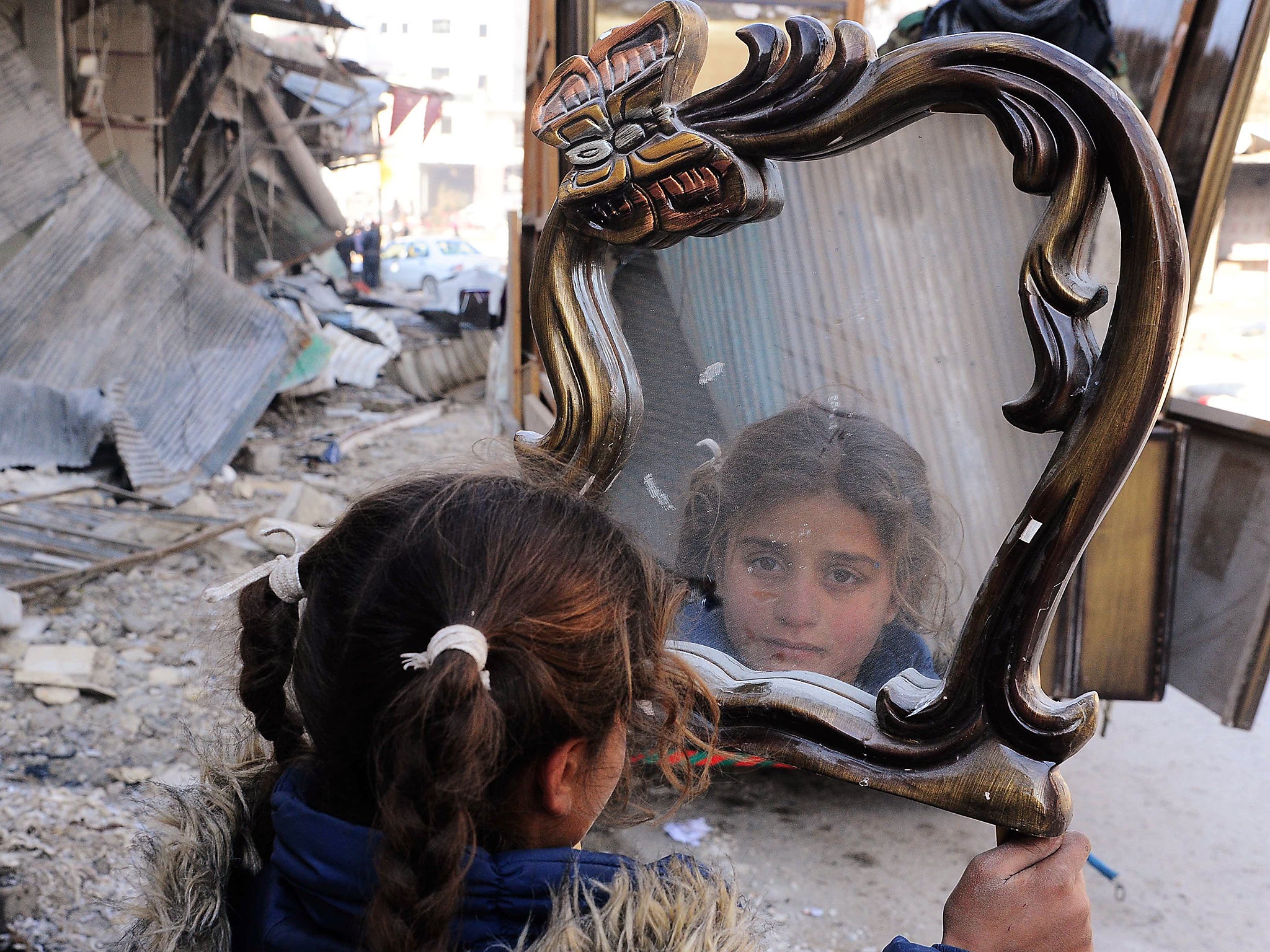US-led coalition killed more Syrian civilians than Isis or Russia in March, figures show
In the same month, number of deaths from US air strikes across region soars as Russia scales back its operation

More civilians caught up in the Syrian conflict were killed by US-led coalitions than by Isis or Russian-led forces in the last month, according to figures released by a human rights organisation.
The Syrian Network for Human Rights (SNHR), found Isis killed 119 civilians in Syria in March, including 19 children and 7 women, with Russian forces believed to have killed 224 civilians in the same month, including 51 children and 42 women.
The SNHR found the international coalition forces, led by the US, killed 260 civilians, including 70 children and 34 women.
In the same month, reports of civilian deaths from US air strikes across Syria and Iraq soared to an all-time high, according to Airwars, a British monitoring group, which found there were 1,472 casualties linked to US air strikes in March.
While on the campaign trail in 2015, Donald Trump pledged to “bomb the s**t” out of Isis if he became President, and coalition warplanes have dramatically increased their strikes against Isis in both Mosul and Raqqa, while the number of US troops on the ground has also increased.
At the same time, Russia has scaled down its campaign following a partial ceasefire in December 2016.
Syrian regime forces killed 417 civilians including 61 children and 46 women, the SNHR found.
The SNHR, which monitors Syrian casualties of all the parties, acknowledges the real number of civilians killed in the conflict could be much higher, however, because of the difficulties in keeping track of victims.
The Syrian Government and Isis do not publish, reveal, or record their victims and many people are killed on battlefronts and not inside cities, making it more difficult to keep track of numbers.
The SNHR report said: “From our perspective, the statistics published by some groups on this category of victims are fictitious and are not based on any actual data.
“Therefore, the report only includes civilian victims who were killed by all parties and compares them.”
Airwars says that while all data coming from the region should be treated with caution, the US has so far been responsible for 68 per cent of all airstrikes against Syria, and the rest of the allied forces including the UK for 32 per cent.
The number of civilian casualties is apparently surging both in Syria and Iraq as the allies regain territory lost to Isis, with the battle shifting away from rural areas to more densely populated cities like the Iraqi city of Mosul.
As many as 200 residents of Mosul are believed to have been killed by airstrikes in recent weeks, including one on March 17 which may have taken the lives of more than 100 people in a single hit.
A US strike in a rural area of Raqqa in Syria killed up to 30 civilians who had taken shelter in a school last week, according to reports. The previous week, the Syrian Observatory for Human Rights claimed that 42 people, most of whom were civilians, were killed by a US bombing in the town of Al Jinah, in what it deemed a “massacre.”
Airwars said in a statement: “Almost 1,000 civilian non-combatant deaths have already been alleged from coalition actions across Iraq and Syria in March — a record claim.
“These reported casualty levels are comparable with some of the worst periods of Russian activity in Syria.”
US military officials said they worked hard to avoid civilian casualties and insist there have been no changes to the rules of engagement in Iraq and Syria, in spite of Mr Trump’s campaign pledges to up the ante in the region.
A spokesperson for the US Central Command said the head of the command, General Joseph Votel, was "not looking into changing the way we operate, other than to say our processes are good and we want to make sure we live by those processes.”
Some military experts in the US have suggested the ramping up of the airstrikes may have more to do with the ebb and flow of war than the Trump administration.
“The US is moving more into environments that look like conventional warfare, moving up the spectrum from targeting individuals to participating in ongoing conflict, and that’s going to produce more casualties,” said Heather Hurlburt, a policy director at the New American Foundation and a former State department official.
In March, 400 more American troops were deployed to Syria, including a team of Army rangers and a Marine artillery unit, almost doubling their presence in the country, and it was announced last week the US will send an additional 240 soldiers to Iraq as part of the fight to take back western Mosul from Isis.
Some experts have suggested the increased number of US troops on the ground could make commanders more accepting of large numbers of civilian casualties because decisions are taken to protect US military personnel.
US Defence Secretary Jim Mattis insisted coalition troops “always do everything humanly possible to reduce the loss of life or injury among innocent people. The same cannot be said for our adversaries.”
But Amnesty International has questioned the legality of the attacks in Mosul.
“Evidence gathered on the ground in East Mosul points to an alarming pattern of US-led coalition airstrikes which have destroyed whole houses with entire families inside,” said Donatella Rovera, Senior Crisis Response Adviser at Amnesty International.
“The high civilian toll suggests that coalition forces leading the offensive in Mosul have failed to take adequate precautions to prevent civilian deaths, in flagrant violation of international humanitarian law."
Join our commenting forum
Join thought-provoking conversations, follow other Independent readers and see their replies
Comments
Bookmark popover
Removed from bookmarks